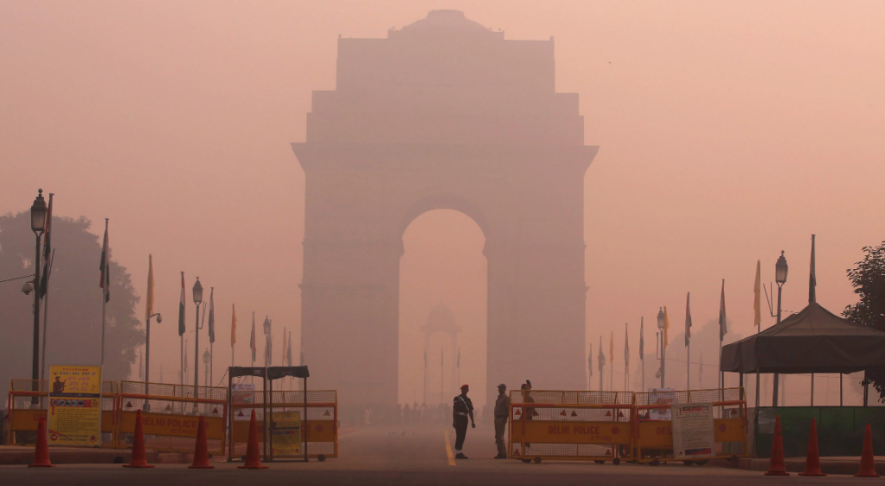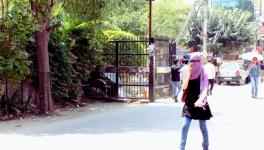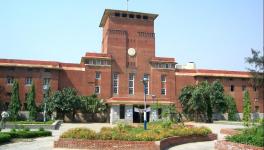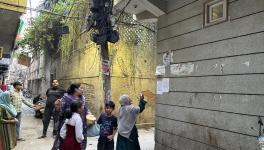Delhi: Post-Diwali, Pollution Levels Back to ‘Very Poor’; AQI Spikes to 363

New Delhi: Air pollution worsened in Delhi amid unfavourable meteorological conditions on Tuesday morning and a relief is unlikely soon.
Based on data provided by nine out of the 40 monitoring stations in Delhi, the capital's air quality index stood at 363 -- very poor category-- at 8 a.m.
Rest of the monitoring stations failed to generate enough data for indexing, according to the Central Pollution Control Board's mobile application Sameer.
Squandering the relief due to rain, Delhi recorded a jump in pollution levels and a smoky haze returned on Monday after people flouted the ban on firecrackers on Diwali night.
According to IQAir, a Swiss company that specialises in air quality monitoring, Delhi was the most polluted city in the world on Monday, followed by Lahore and Karachi in Pakistan. Mumbai and Kolkata ranked fifth and sixth among the most polluted cities in the world.
Delhi recorded its best air quality on Diwali day in eight years on Sunday, with its 24-hour average Air Quality Index (AQI) settling at 218 at 4 pm. However, bursting of firecrackers till late Sunday night led to a spike in pollution levels amid low temperatures.
The AQI stood at 275 at 7 a.m on Monday and gradually rose to 358 by 4 p.m.
An AQI between zero and 50 is considered good, 51 and 100 satisfactory, 101 and 200 moderate, 201 and 300 poor, 301 and 400 very poor, 401 and 450 severe and above 450 severe plus.
"It's evident that the spike in pollution levels post Diwali is due to two factors -- firecracker bursting and farm fires -- with fireworks being the predominant reason in this case," an official of the Commission for Air Quality Management (CAQM), a statutory body responsible for formulation of strategies to reduce pollution in Delhi-NCR, told PTI.
The concentration of PM2.5, fine particulate matter that can penetrate deep into the respiratory system and trigger respiratory problems, exceeded the safe limit of 60 micrograms per cubic metre by 30 to 35 times in many areas.
Firecracker bursting pushed the PM2.5 concentration at many places, including Okhla and Jahangirpuri, in the capital over 1,000 micrograms per cubic metre in the early morning hours.
According to Central Pollution Control Board (CPCB) data, cities across India saw a rapid rise in air pollution levels the day after Diwali.
The AQI jumped from 235 to 385 in Uttar Pradesh's Baghpat, from 152 to 361 in Haryana's Kaithal, from 180 to 380 in Punjab's Bathinda, from 211 to 346 in Rajasthan's Bharatpur, from 260 to 380 and from 214 to 355 in Odisha's Bhubaneswar and Cuttack, respectively.
According to Delhi Pollution Control Committee (DPCC) data, PM2.5 pollution levels at Jawaharlal Nehru Stadium soared to 1,423 micrograms per cubic metre by 2 am on Monday before gradually coming down to 101 micrograms per cubic metre by 12 noon due to a rise in temperature.
The PM2.5 concentration at Okhla stood at 1,629 micrograms per cubic metre at 1 am on Monday and dipped to 157 micrograms per cubic metre by 12 noon.
The concentration of fine, lung-damaging particulate matter PM2.5 and PM10 increased by 45 per cent and 33 per cent respectively on Diwali compared to last year, according to an analysis by the DPCC The pollution control body also said nearly all air quality monitoring stations in Delhi recorded an increase in pollution levels on Diwali day compared to the previous year.
Delhi recorded an AQI of 312 on Diwali last year, 382 in 2021, 414 in 2020, 337 in 2019, 281 in 2018, 319 in 2017 and 431 in 2016, according to CPCB data.
The city's AQI a day after Diwali stood at 360 in 2015, 445 in 2016, 403 in 2017, 390 in 2018, 368 in 2019, 435 in 2020, 462 in 2021 and 303 in 2022.
The CAQM official quoted above said stringent measures, including a ban on construction work and the entry of polluting trucks in the national capital, under the final stage of the central government's air pollution control plan called the Graded Response Action Plan (GRAP) will continue until further orders.
"Stubble burning incidents are rising again and the meteorological conditions are not favourable (for dispersion of pollutants). We will review the situation and act accordingly," the official added.
Get the latest reports & analysis with people's perspective on Protests, movements & deep analytical videos, discussions of the current affairs in your Telegram app. Subscribe to NewsClick's Telegram channel & get Real-Time updates on stories, as they get published on our website.
























